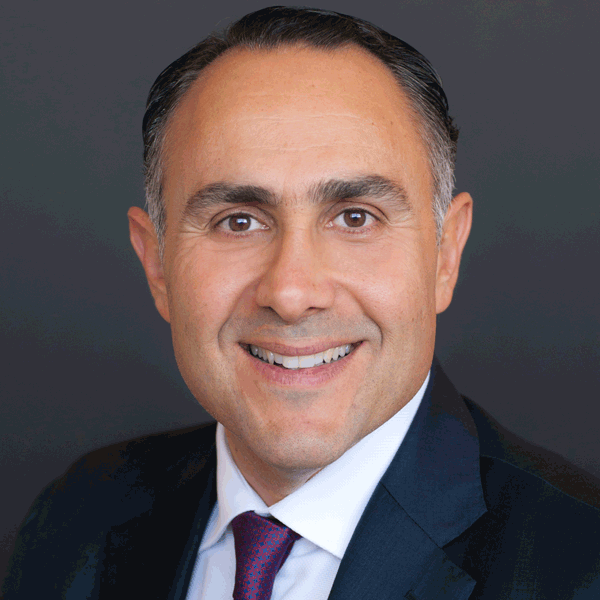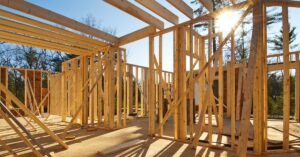The recovery of the U.S. commercial real estate market has been surprisingly robust. While not all sectors of the market have fully bounced back, the end of the downturn related to the COVID-19 pandemic appears in sight.
Due to added certainty about the economy and progress on the health front, various investor types are looking for yield. Many of them are turning away from traditional investments and pouring their money into private debt funds that finance real estate projects. This should come as good news for commercial mortgage brokers as it assures that money will be available to finance their deals in the months ahead.
The national economy and commercial real estate market are improving on multiple fronts. Another $1.9 trillion in federal relief was passed in March 2021. Since the beginning of the health crisis, more than $5 trillion in stimulus money has been infused into the economy. Confidence continues to grow as the pandemic dwindles and more people are vaccinated. In a welcome surprise, the economy has snapped back far more quickly than anticipated while private investors have ample capital on their balance sheets to deploy.
Generally speaking, the commercial real estate industry also has recovered and property investors have far fewer reasons today to sit on the sidelines. In fact, many of these cash-infused investors have missed an opportunity to buy at the bottom of the market. Investors jumping into the buyer pool are often finding that assets are hotly contested. They may be among dozens of capital-laden bidders. A lack of available inventory only aggravates the situation during the bidding process.
As a consequence, asset valuations in some sectors (multifamily and industrial, in particular) are at or near historical highs, and even the sectors that have been hurt badly by pandemic-related constraints (such as retail, office and hospitality) are recovering on a nationwide basis. As of this past spring, deep discounts for distressed properties had yet to widely occur, and it remained doubtful whether a significant distressed market would ever materialize from the most recent downturn. One could argue that conditions have created a strong seller’s market for certain asset types in preferred locations.
Given the added certainty, a growing number of passive investors in commercial real estate are looking to place their capital in debt funds used to finance real estate deals. As a result, mortgage brokers and their investor clients should have more options for obtaining loans as the nation continues to emerge from the pandemic. It is important to emphasize that capital is entering the market from various sources. Each of these passive investor types has their own unique characteristics and can be motivated for different reasons.
Investor types
Institutional investors are the first class looking to infuse their capital into commercial real estate. As inventory remains tight throughout many markets — especially in the coveted industrial and multifamily sectors — institutional investors are placing their capital with real estate debt funds. Typically, institutional platforms do not have an internal team that manages a debt portfolio. They typically deploy capital through another platform that has a favorable track record and expertise.
Capital also is flowing into debt funds from small and midsized private investors. These people may not want to buy and operate real estate directly but are looking for alternative passive investment vehicles. These investors typically view their balance sheets in terms of cash holdings, stocks and bonds. With the stock market showing signs of exhaustion, cash paying zero and bond yields extremely low, private investors are on the hunt for an addition to their portfolio mix to diversify and complement other investments.
This bodes well for a capital infusion into the commercial real estate industry. Private debt funds are passive as opposed to the time-intensive nature of ownership in a tangible asset. Bridge loan investments are yielding 4% to 7% net returns for investors while construction loan investments have yields in the high single digits and low double digits. So, as other traditional investment vehicles continue to lag, many private investors are eager to put their money into debt funds that finance commercial real estate deals.
The third source of capital comes from foreign investors. Despite the pandemic, private debt funds are seeing an influx of foreign capital into the U.S. market, particularly from the Middle East, Asia, Latin America and Europe. As with other investor types, the foreign investor is searching for yield but also is motivated by security. Capital backed by U.S. real estate has long been viewed as secure given the level of stability in this country. International investors are often dealing with uncertainties in their home country (politics, economics, inflation, etc.). First-lien exposure to U.S. real estate is perceived as being worth the IRS withholding rate given the potential risks of investing abroad.
In a welcome surprise, the economy has snapped back far more quickly than anticipated while private investors have ample capital on their balance sheets to deploy.
Evaluation methods
Commercial mortgage brokers should pay attention to where investors are putting their money. The smart investor will evaluate a debt fund carefully and by a common set of rules. As a broker, you can apply some of the same criteria when looking for the ideal lender fit for your loan proposal.
First, savvy investors tend to look at the track record of a fund. A private debt fund with at least three years of experience in real estate deals will tend to be more successful in raising capital. Five years or more is ideal.
The fund manager also should have an intimate understanding of the property sector, project and geographic region. It is one thing to lend money to an investor or developer, but it is an entirely different task to fully understand the intricacies involved so that a commercial mortgage can be properly and conservatively underwritten. For example, if a developer walks away from a construction project, private lenders with a Wall Street background may not have the real estate acumen to handle the receivership of a distressed asset. This could lead them to offload the incomplete project at a huge discount, to the detriment of their investors.
Investors in debt funds also want to know the loan parameters. The debt fund investor will want to know the fund’s loan to value (LTV) and loan to cost (LTC) ratios on any given investment, as well as an explanation for how they set their underwriting parameters. It ultimately comes down to the lender’s basis in the deal. If a borrower defaults on their loan and the lender applies a maximum LTV of 60%, then there is a sizable buffer if market valuations retreat. The property will still have upside potential, and the lender is unlikely to become a forced seller and lose principal in the deal.
Looking ahead
Lenders are frequently asked how long investors will continue to put money into debt funds. No one can say for sure, but it could go on for quite some time. The Federal Reserve, for example, appears intent on keeping benchmark interest rates close to zero with no plans on raising them for the foreseeable future.
This is driving investors to place their money into assets with higher risks than CDs or bonds. Investors are compelled to turn to the stock market and private debt funds, among other sources, to create supplementary value and diversify their investment profiles. One of the most commonly known rules of investing is that the more risk that is taken, the higher the potential for increased returns. With commercial real estate weathering the pandemic-induced storm, market resiliency has been reinforced once again. With fierce competition for these tangible assets, debt funds make sense, and they also allow the investor to take a passive role while still yielding considerably higher returns than those provided by cash, bonds or stocks.
Finally, it is important to note that the economic downturn tied to the pandemic is an entirely different situation compared to the Great Recession and financial crisis of a dozen years ago. The Great Recession was a disaster for many residential and commercial real estate owners. They were forced to pull out of the market and couldn’t get back in when asset prices hit rock bottom.
This scenario simply has not occurred during the recent downturn. In fact, many investors have already missed the bottom of the market. As the market heats up, investors of all types are turning to private debt funds for assets backed by first- and second-lien mortgages. ●
Author
-

Paul Rahimian currently manages a debt fund that provides construction financing to ground up real estate development projects on a national basis. He founded Parkview Financial in early 2010 and has since originated hundreds of commercial and residential loans, always plying his trademark hands-on management style. Distinguished from its competitors by dedicated in-house finance and accounting professionals Parkview is widely recognized as a pioneer in the industry, among the first to offer complete integration of loan origination and servicing. Prior to becoming a lender, Paul was a third-generation real estate developer and general contractor. Between 1988 and 2009, he successfully completed over $350MM in commercial and residential projects. His vast expertise and knowledge in the construction and development industry has benefited both Parkview and its borrowers. Paul received his B.A. from UCLA in Business/Economics and his Juris Doctorate from the University of Southern California.
View all posts




















































